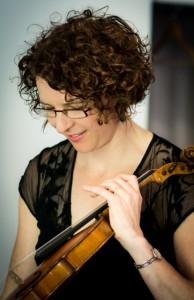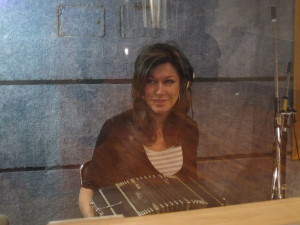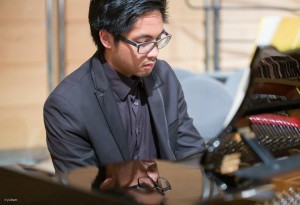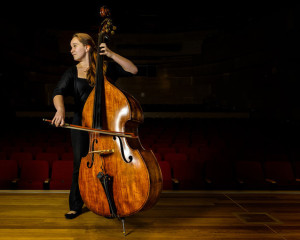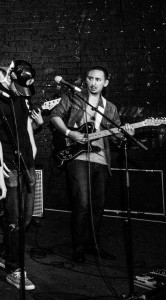News
8 Seasons – MFT and Concertante Ensemble
Vivaldi’s Four Seasons meet Piazzolla’s masterpieces Las Cuatro Estaciones de Buenos Aires. Tango visits Baroque; one season inspires another.
Ensemble Concertante led by Karina Hollands solo violin with guest artists Maggie Ferguson bandoneon, Francis Carreon piano, Isabella Brown double bass and Murilo Tanouye electric guitar.
Friday June 2nd at 7pm in the iconic Avoca Picture Theatre, 69 Avoca Drive, Avoca Beach. Details Concertante Ensemble
Piazzolla and Baroque
BAROQUE – Broken pearl – irregular, imperfect, ornate, florid.
General Similarities
- Ornamental decoration to embroider melodies
- Expressive dissonance to create tension
- A single musical piece expresses a single mood or feeling *
- Continuous rhythmic drive *
- Chordal harmony underpins melody *
- Very little percussion *
- Abrupt shifts in dynamics *
- Use of Fugato and fugue expositions
- Imitative counterpoint
Main characteristics which link Piazzolla to the Baroque
- AP was primarily the performer of his own work, like Vivaldi , Handel and Bach, (not just a regular performer as were Hindemith, Prokofiev and Bartok)
- AP performed the same music in diverse venues – cabaret, jazz, nightclubs and concert halls – with the best musicians of every genre.
There was a lack of distinction between serious and popular music
- Improvisation – AP’s bandoneon parts were skeletal, meaning to be fleshed out in performance as demanded by the musical occasion. Handel frequently dispensed with a written organ part to allow him this freedom.
- Like Vivaldi and Handel, AP composed an enormous amount of music (2,200) with multiplicity of purpose – symphonies, symphonic poems, concertos, an opera, an oratorio, film music, chamber music, tango ballads and tangos.
- AP’s music has also been arranged countless times by others.
Corresponding to well-established patterns in Italian Baroque ornamentation, AP transformed compositions, (sometimes to an unrecognizable point). He did this with patterns of rhythmic alteration (rubato and swing) and melodic ornamentation.
He did not simply imitate techniques from Baroque and Jazz but developed a parallel musical model consistent with ‘Convergent Evolution’, comparative with present day musicians who have inherited Baroque ornamentation and the contrapuntal forms of Western Music. His Cuatro Estaciones de Buenos Aires pays homage to Vivaldi’s Four Seasons, especially in their programmatic nature and attention to key relationships (see below)
Vivaldi
- Last great Italian instrumental composer,
- Violin virtuoso who explored the high registers surpassing comtempory technique
- Influenced Bach, who analysed all his works
- Introduced modern concerto format – 3 movements – fast, slow, fast
*Credit – Carole B Miller mostlywind.co.uk
PhD dissertation, USA
Keys of the Four Seasons and Las Cuatro Estaciones
Spring Primavera
E major G minor
C# minor
E Major
Summer Verano
G minor A minor-F minor-A minor-C minor
Autumn Otono
F Major A minor-D minor-A minor
D minor
F Major
Winter Invierno
F minor F minor-G minor-A minor-C minor-A minor-Eb Major
Eb Major
F minor
The keys chosen by Vivaldi are related in ‘Spring’ and ‘Autumn’, contrasting with uniform G minor of ‘Summer’ and the drama of ‘Winter’.
His music had a narrative element (later called Program Music). Given that he often used natural occurrences, events and texts to illustrate his music, his choice of keys probably reflected his environment.
Traditionally, more often than not, tangos began in a minor key, modulated briefly to a related major key and finished in minor. This often reflected the intensely felt and sometimes very sad lyrics which accompanied the tango. While Piazzolla broke many rules musically, he was nonetheless a Porteno, (from the port city Mar del Plata) and inherently a Tanguero, so his music naturally tended to mirror his emotions. Another example is Adios Nonino, composed in NYC on hearing of his father’s death.
Curiously Piazzolla chose G minor (not E Major) for ‘Primavera’(‘Spring’), a clear skied, sunny, warm optimistic season in the city of Buenos Aires, followed by a restless minor tango, Verano (which is stuffy and hot), where the keys move by thirds. Otono (‘Autumn’) is similarly minor and dark.
Of most interest are the beautiful ‘Winter’ and Invierno. While Vivaldi settles on fabulously bleak F minor, the juxtaposition of Eb Major for the short middle Largo is like the sun coming out to warm the landscape, only to return to F minor as the clouds threaten again. For Invierno, arguably the finest of the suite, Piazzolla begins in F minor only to roam as far away as possible through five key changes, to finally settle in his only major key of the entire suite–the Largo’s Eb Major. These final 21 bars are as unlike a tango as they are close to a hymn, especially in the final cadence, which Piazzolla could only have written for his bandoneon.
BACK TO BLOG POSTS